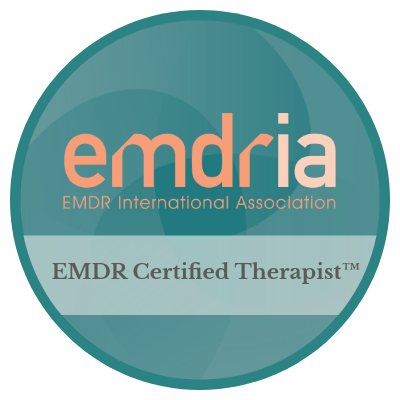In recent years, Eye Movement Desensitization and Reprocessing (EMDR) has gained widespread recognition as a powerful and effective therapeutic technique for treating trauma and a range of emotional challenges. While it might sound complex, EMDR is rooted in a simple yet transformative process that helps individuals heal from the emotional scars of traumatic experiences.
But what exactly is EMDR, and how can it benefit mental health?
What is EMDR?
EMDR is a psychotherapy method developed by Dr. Francine Shapiro in the late 1980s. It’s particularly known for its success in treating Post-Traumatic Stress Disorder (PTSD), but it has also proven effective for a variety of other mental health concerns such as anxiety, depression, grief, pain, clearing the yipes and phobias.
The therapy works by helping clients reprocess distressing memories in a way that reduces their emotional charge, allowing individuals to make sense of their experiences and integrate them in a healthier way.
The process of EMDR involves the following key components:
- History-taking: The therapist begins by understanding the client’s history, including the traumatic events that are causing distress. This helps identify target memories that need reprocessing.
- Preparation: The therapist establishes a safe and trusting relationship with the client and ensures they have coping strategies to manage emotions during the session.
- Desensitization: Using bilateral stimulation (usually in the form of guided eye movements), the therapist helps the client reprocess distressing memories. This bilateral stimulation helps the brain process memories in a more adaptive way, reducing emotional intensity.
- Installation: The therapist helps the client replace negative beliefs associated with the traumatic memory with positive, more empowering beliefs (e.g., from “I am worthless” to “I am deserving of love and respect”).
- Body Scan: The client checks for any remaining tension in the body related to the trauma. If tension is present, further processing is done to alleviate it.
- Closure: The therapist ensures that the client feels safe and stable at the end of each session. The process may involve grounding techniques to help the client leave the session feeling balanced.
- Reevaluation: In follow-up sessions, the therapist checks whether the distress around the target memories has reduced and whether new insights have been gained.
The Science Behind EMDR
While the exact mechanisms of how EMDR works are still under research, one widely accepted theory is that the bilateral stimulation (eye movements or other forms) mimics the brain’s natural processing during Rapid Eye Movement (REM) sleep. During REM sleep, our brains process and store memories, making them less emotionally charged and easier to understand. EMDR aims to replicate this natural process while the client is awake, facilitating the resolution of traumatic memories.
Key Benefits of EMDR
- Effective Treatment for Trauma and PTSD EMDR is widely recognized as one of the most effective therapies for trauma and PTSD. It has been endorsed by organizations such as the American Psychological Association (APA) and the World Health Organization (WHO). For individuals who have experienced significant trauma, such as abuse, accidents, or combat, EMDR can help alleviate the intense emotional reactions linked to these memories, making it easier to move forward in life.
- Reduces Anxiety and Depression Although EMDR is primarily known for trauma therapy, it has also been shown to help individuals dealing with anxiety and depression. By reprocessing the negative beliefs associated with past experiences, individuals can develop a more positive outlook on life and their ability to cope with stressors.
- Improves Self-Esteem Many people struggling with mental health issues also struggle with low self-esteem. Negative beliefs formed from past trauma, such as “I’m unworthy” or “I’m not good enough,” can create lasting emotional barriers. Through EMDR, individuals can replace these beliefs with healthier, more empowering ones, which can lead to improved self-worth and confidence.
- Helps With Phobias and Fears EMDR has been shown to be effective in treating specific phobias (e.g., fear of flying, spiders, or public speaking). By targeting the distressing memories that fuel the fear, EMDR can help individuals face their phobias with a new, less fear-based perspective.
- Rapid Results Many people experience noticeable improvements in a relatively short period of time with EMDR. Unlike traditional talk therapy, which may take months or years to address deeply rooted issues, EMDR can provide faster relief from emotional distress, making it an appealing option for those seeking quicker progress.
- No Need for Medication While some individuals may benefit from medication to manage their symptoms, EMDR offers an alternative to pharmaceutical intervention. It can help individuals address the root cause of their distress without the need for long-term medication use.
- Works for All Ages EMDR is a versatile therapy suitable for both children and adults. Children, in particular, may find it easier to process their emotions through EMDR’s interactive methods (e.g., drawing or playing) as opposed to more traditional talk therapy approaches.
Who Can Benefit from EMDR?
EMDR can help anyone who has experienced trauma or emotional distress, including those with:
- Post-traumatic stress disorder (PTSD)
- Anxiety disorders
- Depression
- Addiction
- Grief and loss
- Phobias
- Chronic pain
- Low self-esteem
- Clearing yips
- Artistic blockages and more



